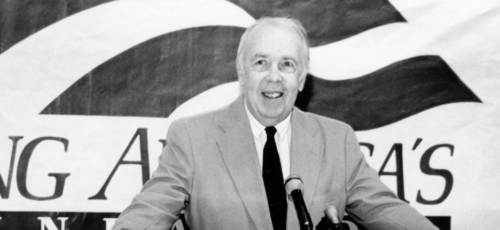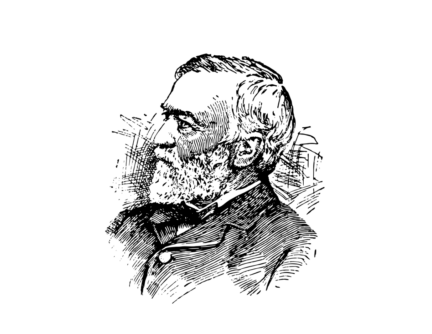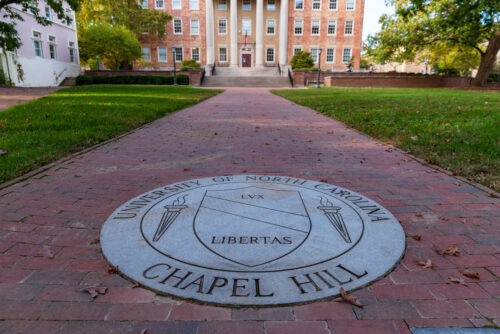The nonprofit tax form, the 990, is a bureaucratic burden on nonprofits … but it does offer donors some level of protection and transparency.
I’ve never run a nonprofit, but I’ve filed plenty of tax returns, so I assume filling out a Form 990 is a chore. But the reason Congress in 1969 began requiring nonprofits to file 990s and make them publicly available is so that people would have financial information about nonprofits they might support. Prior to the mandating of the Form 990, nonprofits were free to reveal as little or as much about their finances as they wanted, so many groups chose to tell the public nothing about what they did.
But requiring Form 990s and ensuring they’re publicly available is a rule where the benefits outweigh the costs, particularly when GuideStar and ProPublica Nonprofit Explorer make the 990s easily available to everyone. Here are two stories that show the importance of Form 990s.
Bryant “Corky” Messner is the Republican opponent for the New Hampshire Senate seat currently being held by Democrat Jeanne Shaheen. In his primary race, he repeatedly made reference to the Messner Foundation, an organization he created. “My intent with that foundation is to help young people who are growing up in the inner city or otherwise in difficult circumstances and help them go to college with scholarships,” he said during a Zoom call in May.
Well, who would have a problem with that? The Washington Post’s fact checker, Glenn Kessler, investigated and found that the Messner Foundation is a legitimate 501(c)(3)—but one with very little money.
The foundation started in 2010 as a nonprofit associated with Messner’s law firm, Messner Reeves, which donated $100,000. The money sat for four years and then, in 2014 the foundation made one grant of $50,000 to the Colorado Academy, a private school that one of Messner’s sons attended.
In 2015, the Messner Foundation began fundraising by auctioning expensive cars. In that year the foundation raised $211,000 but had $113,000 in expenses, including spending $84,000 for a Tesla roadster. One year later, the foundation awarded its first scholarship, to Majarlika Diane Vaijaruel-Mariano, who ultimately received about $48,000 to attend the University of Denver. The foundation says it has started the process of awarding a second scholarship but a third recipient approved by the foundation ultimately turned them down.
Kessler said that Messner’s claim that his foundation awarded many scholarships when it awarded one and possibly two earned him a rating of Four Pinocchios, the lowest score.
After Kessler’s article appeared, former Colorado Supreme Court chief justice Mary Mullarkey and five other people sent a letter to the Colorado secretary of state and the Colorado attorney general charging that the Messner Foundation “swindled … the underprivileged students in Colorado it was promising to help.” The Denver Post noted that five of the six people who signed Chief Justice Mullarkey’s letter were connected to Democratic politics in Colorado.
I predict this investigation will not go very far because it is not a crime to create a foundation that is small and doesn’t do very much. But I also suspect Corky Messner will not try to claim to be very generous in future campaign ads.
The Messner Foundation is, at least, a traditional nonprofit, albeit an inactive one. But Emma Copley Eisenberg in the Washington Post Magazine tells the bizarre story of Queer Appalachia, a group that is not a nonprofit, because, well, it’s a “radical art collective” that says it represents 42 types of people, including “farm-hers,” “dirt witches,” “dirt princesses,” plain old “dirt” and several other and stranger categories. What’s more, they say, they’re opposed to nonprofits because “the nonprofit structure which is supposed to serve the community can feel just as criminal as the coal industry. We are tired of seeing white people with masters degrees sitting around dry erase boards and calling it praxis.”
Queer Appalachia has over 250,000 followers on Instagram and, according to Copley Eisenberg, is very popular with Millennial liberals in part because “if you live in New York or Los Angeles, it may be the only Appalachian-based media you know.” It’s the sort of place that sells t-shirts that say “Capitalism Is The Virus” for a $35 donation.
The group is headed by Gina Mamone who appears to be the only person working for Queer Appalachia. Of course, if it’s not a nonprofit, how do donors know their money is being used for what they want?
The answer is: they can’t, and Copley Eisenberg says that no one knows what Queer Appalachia does. In 2018, they held a coat drive where people were encouraged to send “gently used coats” to Bluefield, West Virginia, to be distributed to “queer people in need,” but she found no evidence this actually happened or where the 400 coats shipped to Bluefield were stored. Nor did she find any evidence that money solicited to aid Appalachian wildfires went to any victims.
Ultimately Copley Eisenberg found, with what I gather is a good deal of effort, that Queer Appalachia did give $8,100 in microgrants to some Appalachian residents. She found no evidence the group performed any other charitable activity.
Go to Queer Appalachia’s website and you’ll find no mention of Gina Mamone. Instead you’ll see a statement that the group “has made such an application” for 501(c)(3) status “on advice of counsel” and lists an attorney in Beckley, West Virginia as point of contact. Their website says “financial summaries by a CPA coming in November 2020” and the group is now selling facemasks to pay for “Patreon repatriation,” which I suspect means “money we have to give back to our donors who are mad at us.”
Applying for a 501(c)form and filling out Form 990s are a lot of paperwork, to be sure, but they are also vital for communicating to donors that their gifts are being used for their intended purposes. They may be bureaucratic, but Form 990s ultimately strengthen nonprofits.






